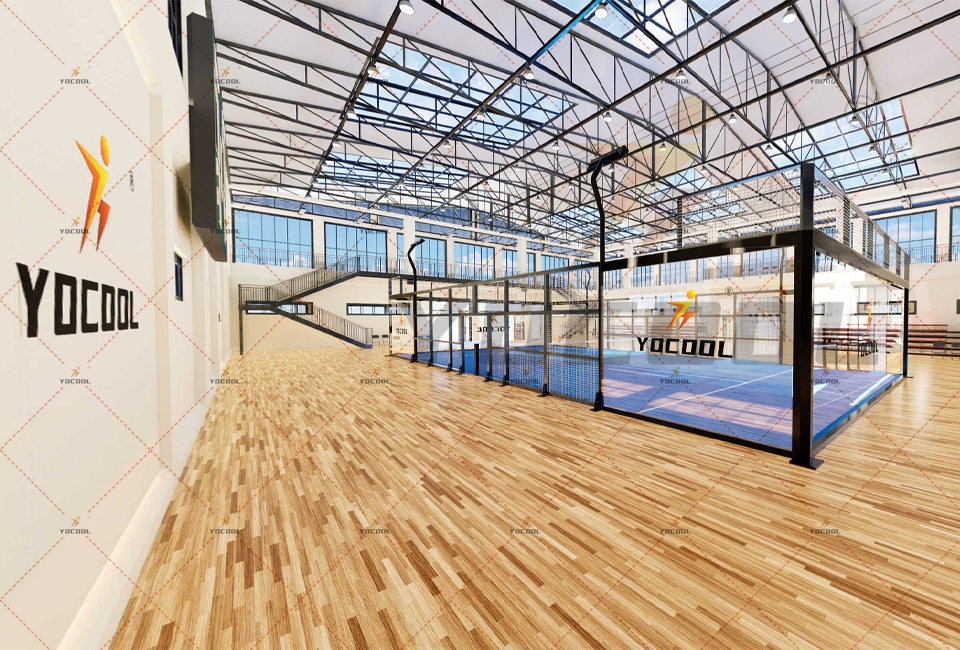

The Cost of Building a Padel Court A Comprehensive Overview
As the popularity of padel, a racquet sport that combines elements of tennis and squash, continues to rise globally, many enthusiasts and investors are considering building their own padel courts. This sport is not only a fun way to stay active but also fosters community engagement, making it an attractive investment. However, understanding the costs associated with building a padel court is crucial for anyone looking to embark on this project. In this article, we will explore various factors that influence the price of constructing a padel court and the options available for sourcing materials and services from factories.
Initial Considerations
Before delving into price specifics, it's important to grasp the fundamental components of a padel court. A standard padel court is enclosed, measuring 20 meters long and 10 meters wide for doubles play. It's surrounded by walls made of solid materials, often glass, with a playing surface typically constructed from artificial grass or other suitable sports surfaces. These dimensions and specifications will greatly influence the overall cost.
Construction Costs
1. Site Preparation The first step in building a padel court is ensuring you have adequate land. Depending on the location and existing conditions, site preparation can vary significantly in cost. This might involve leveling the ground, removing debris, and laying drainage systems, which can range from a few hundred to several thousand dollars.
2. Materials The materials used for constructing the court will greatly affect the price. High-quality Artificial turf, which is a popular choice for padel courts, can cost anywhere from $25 to $50 per square meter. Additionally, the type of walls you choose—be it glass, concrete, or a combination—will influence the cost. Glass panels, while aesthetically appealing, are more expensive compared to other materials.
3. Construction Labor Hiring professionals to construct the court typically takes up a significant portion of the budget. Labor costs will generally differ based on location and the complexity of the build. In some regions, you might see labor rates ranging from $30 to $60 per hour, depending on your contractor’s experience and the project’s demands.

4. Lighting and Amenities If the court is to be used during evening hours, adequate lighting is essential. Installing high-quality LED lights can add another $5,000 to $15,000 to the overall budget. Additional amenities such as seating, changing rooms, and restrooms will also increase the total cost of building a padel court.
5. Permits and Regulations Depending on your location, you may be required to secure various permits and comply with zoning regulations. This can add further costs, so it’s wise to investigate these requirements before starting the project.
Factory-Sourced Solutions
When building a padel court, sourcing materials from factories can potentially reduce costs. Many manufacturers specialize in producing padel court components, such as walls, lighting systems, and flooring materials. Buying directly from factories often comes with lower price points compared to retail due to reduced markups.
1. Bulk Purchases If you plan to construct multiple courts or if you’re working with a sports facility, consider negotiating bulk purchase agreements with manufacturers. This can lead to substantial discounts.
2. Quality Assurance When purchasing from factories, ensure they adhere to international standards for quality and safety. Investing in high-quality materials will not only reduce maintenance costs in the future but also enhance players’ experiences.
Conclusion
Building a padel court can be a rewarding venture that requires careful financial planning and consideration of various factors. The total cost can range from $25,000 to over $100,000, depending on the quality of materials selected, labor costs, and added amenities. By sourcing materials from reputable factories, individuals and organizations can optimize their budgets while ensuring quality and longevity. As padel continues to grow in popularity, investing in such facilities can provide not just enjoyment but also a thriving community hub for players, promoting health, fitness, and social interaction. Whether for personal use or as a commercial venture, understanding the cost implications is essential for a successful build.
Premium PVC & Rubber Sports Flooring Shock Absorption, Slip Resistance
Durable Rubber Floor Mats Slip-Resistant & Easy Clean Design
Premium Rubber Floor Mats Slip-Resistant, Durable & Easy-Clean
Rubber Bricks & Flooring Durable, Slip-Resistant Eco-Friendly Solutions
Homogeneous Transparent Rubber Flooring - Durable & Slip-Resistant
Durable PVC & Rubber Sports Flooring Slip-Resistant & High-Performance